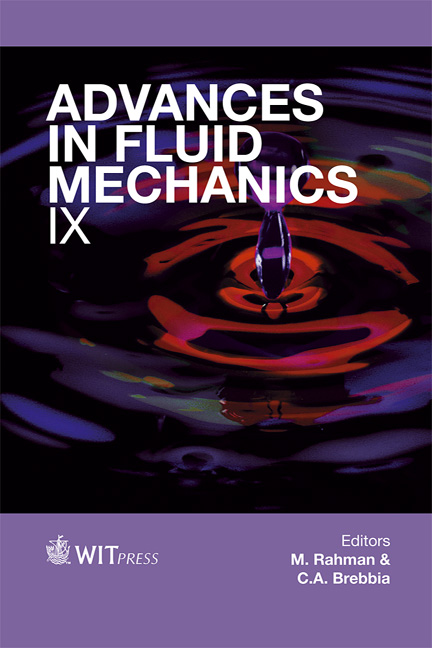Vortices In Micro/nano Channel Flows
Price
Free (open access)
Transaction
Volume
74
Pages
13
Page Range
533 - 545
Published
2012
Size
762 kb
Paper DOI
10.2495/AFM120461
Copyright
WIT Press
Author(s)
Z.-H. Silber-Li, X. Zheng, G.-P. Kong & T. H. Moulden
Abstract
The paper describes a series of experiments that study the formation of threedimensional vortices in micro/nano channel flows subject to an applied electric field. The discussion is supported by a theoretical discussion of the vorticity generation process in such flows. Keywords: micro/nano flows, vorticity, electric fields. \“· · · · · · Under Maple Bridge the boat is moored For my long journey will resume at dawn” Chang Chi (8th century). 1 Introduction A good reason exists as to why electro-osmosis flows are coming into common use at the micro/nano scale. For small diameter fluidic devices the flow rate, Q, is given as Q = πD4P/(128μL) and the Reynolds number low. Hence for pressure driven flows operating a fixed flow rate, the pressure required varies as D−4 and becomes very large as D → 0. On the other hand, for electro-osmotic driven flows, there is only a D−2 proportionality. For electro-osmotic flows in simple channels, the flow is uniform outside a thin, viscous, charge layer that exists near the channel walls. This, of course, is no longer true if the channel contains large area changes when flow separation could occur. The study of Takhistov et al. [1] demonstrated, both theoretically and experimentally, that electrolyte depletion occurs at the junction between a wide (400μm) diameter and a small (80μm) diameter channel. Vortical flow was also observed in that flow and, it was suggested, changes to the local zeta potential gave
Keywords
micro/nano flows, vorticity, electric fields.





